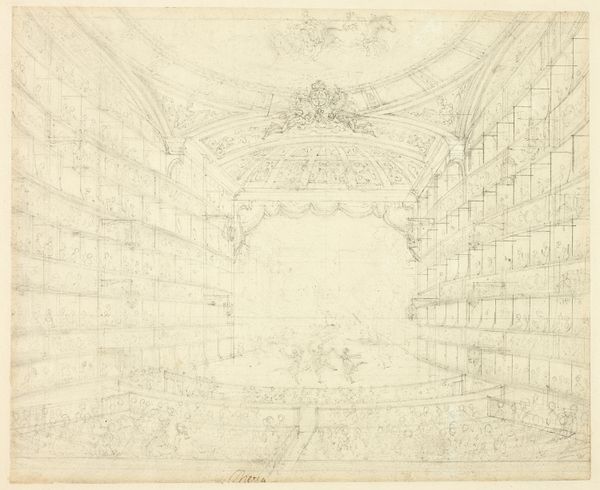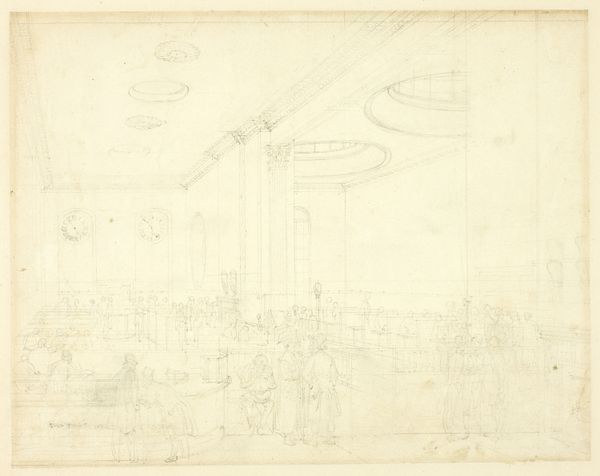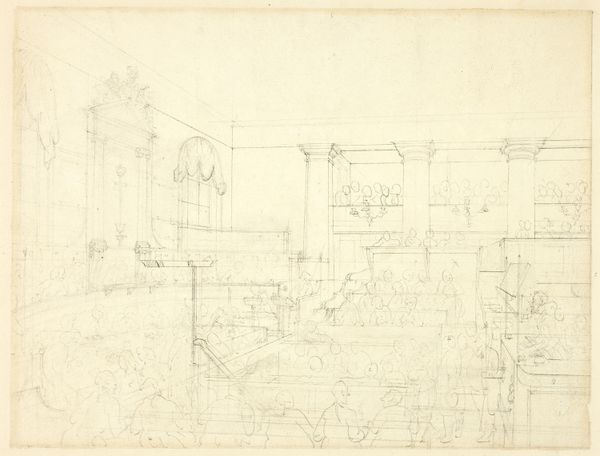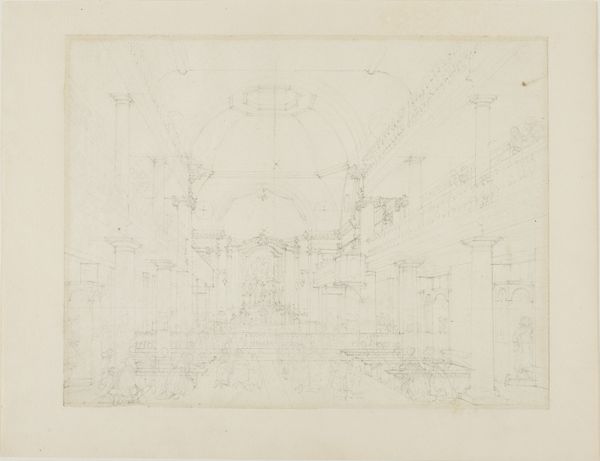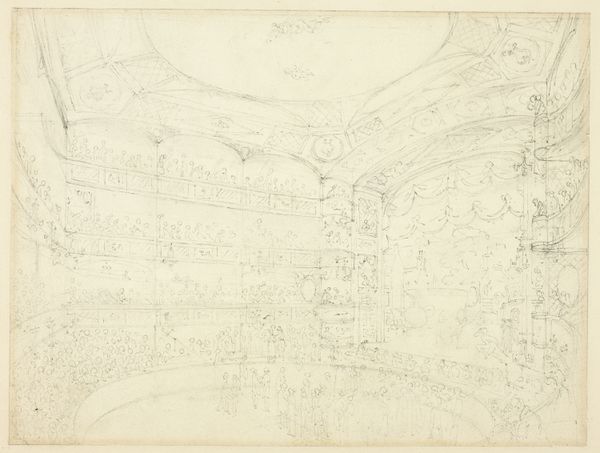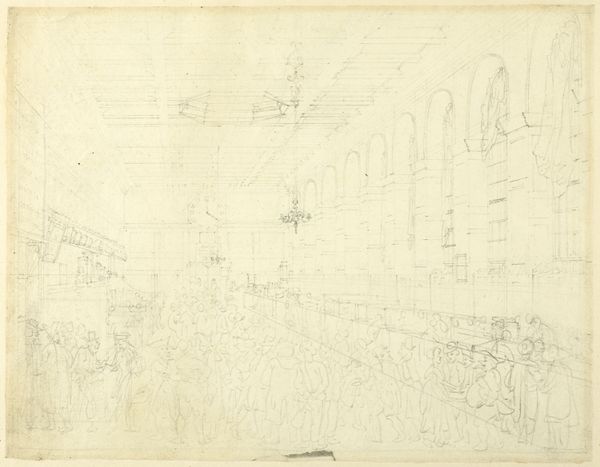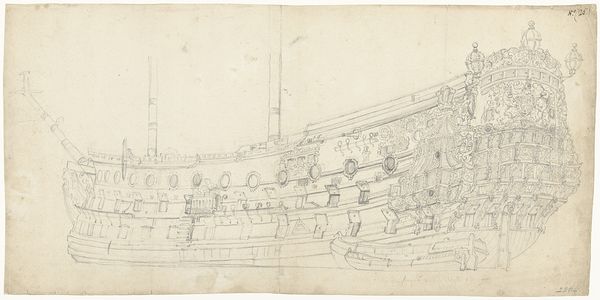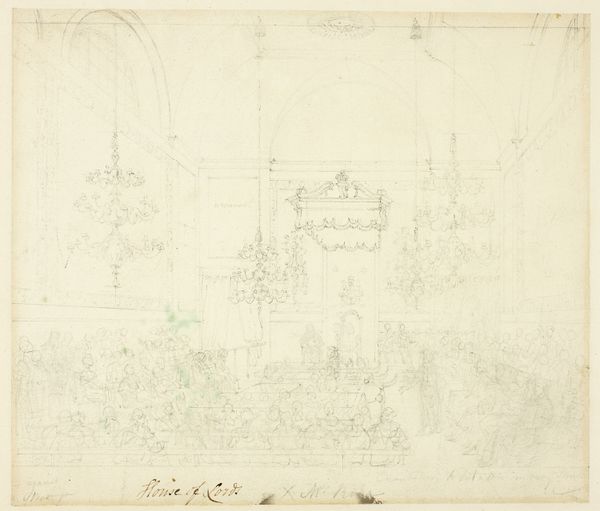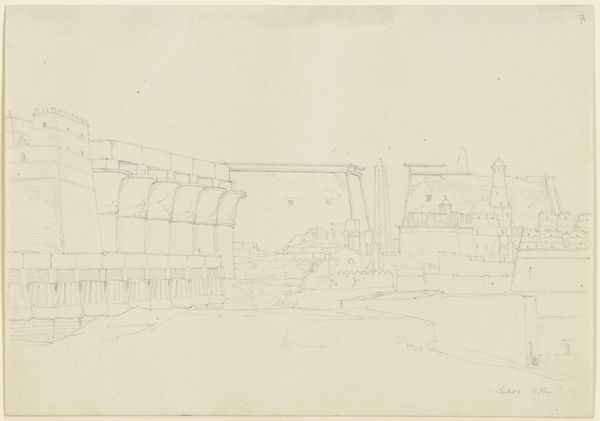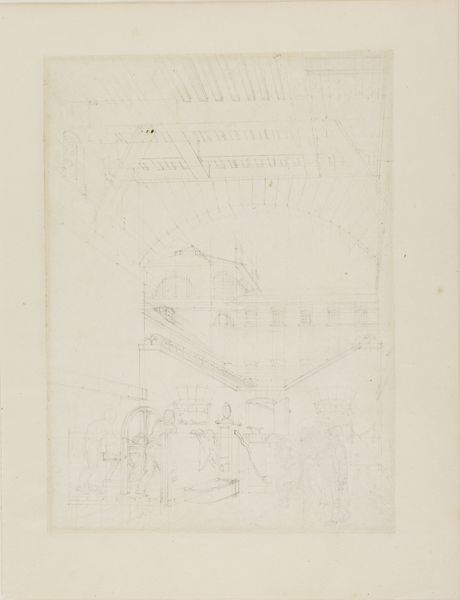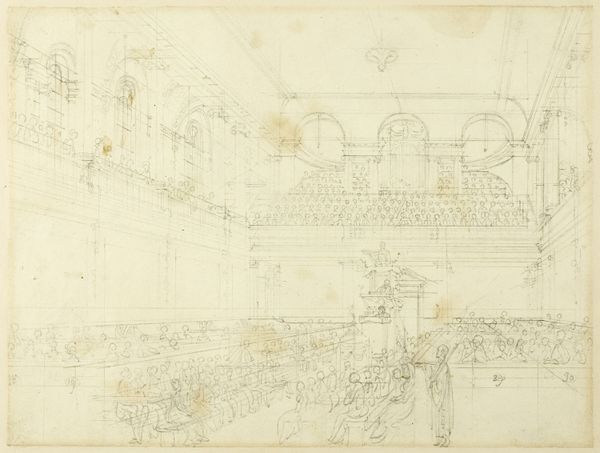
drawing, print, paper, pencil, graphite, architecture
#
architectural sketch
#
drawing
#
neoclacissism
#
aged paper
#
toned paper
# print
#
pencil sketch
#
old engraving style
#
sketch book
#
landscape
#
etching
#
paper
#
personal sketchbook
#
england
#
pen-ink sketch
#
pencil
#
water
#
pen work
#
graphite
#
architecture
Dimensions: 192 × 257 mm
Copyright: Public Domain
Editor: We're looking at Augustus Charles Pugin's "Study for Sadlers Wells Theater," circa 1809, held at the Art Institute of Chicago. It's a pencil and graphite sketch on paper, and there's something really captivating about its unfinished, almost ghostly quality. The theater's structure feels both grand and fragile. What strikes you when you look at this piece? Curator: The intricate web of lines immediately arrests my attention. Pugin masterfully employs line weight and perspective to construct a believable three-dimensional space on a two-dimensional plane. Notice how the strong, confident strokes delineate the architectural framework of the theater, while lighter, more tentative lines suggest the audience and details of the stage. It is almost as if the structure dictates human presence. Editor: So, you are suggesting the drawing style creates a type of structural hierarchy? Curator: Precisely. Consider also how Pugin manipulates the tonal variations of graphite to model the forms and create a sense of depth. Light and shadow interplay across the surfaces, accentuating the contours and recesses of the architecture. Is this not evocative of the architectural prints popularized in Neoclassical engraving, thereby suggesting this drawing is simply preparation? Editor: I see what you mean. The lines do seem very precise for an initial sketch. And the faded appearance emphasizes those formal, structural elements over narrative content, which is fascinating. Curator: Yes, in looking at the drawing solely in its formal structure, without considering narrative qualities, its power lies in its elegant manipulation of visual components. Line, form, perspective; the vocabulary of architectural representation. Editor: It’s like a formal exercise in how to depict space and light, before it’s anything else. I’m appreciating the draftsmanship a lot more now. Curator: It is precisely in this exercise of structure, perspective, form, line, tone, and their masterful manipulation that meaning may be decoded and defined.
Comments
No comments
Be the first to comment and join the conversation on the ultimate creative platform.
